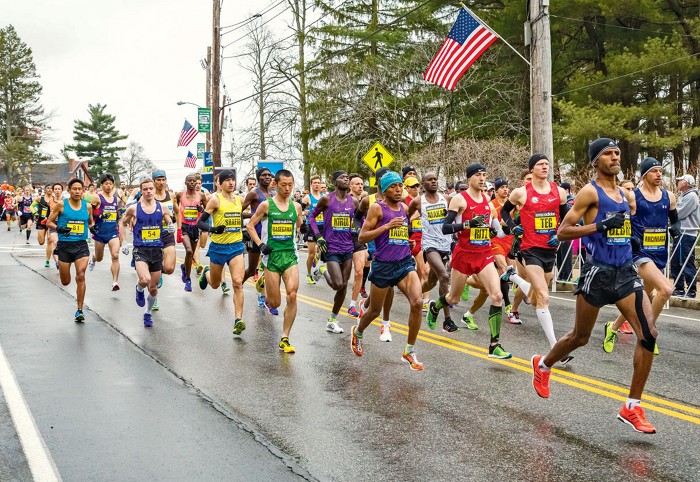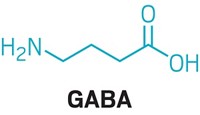Advertisement
Grab your lab coat. Let's get started
Welcome!
Welcome!
Create an account below to get 6 C&EN articles per month, receive newsletters and more - all free.
It seems this is your first time logging in online. Please enter the following information to continue.
As an ACS member you automatically get access to this site. All we need is few more details to create your reading experience.
Not you? Sign in with a different account.
Not you? Sign in with a different account.
ERROR 1
ERROR 1
ERROR 2
ERROR 2
ERROR 2
ERROR 2
ERROR 2
Password and Confirm password must match.
If you have an ACS member number, please enter it here so we can link this account to your membership. (optional)
ERROR 2
ACS values your privacy. By submitting your information, you are gaining access to C&EN and subscribing to our weekly newsletter. We use the information you provide to make your reading experience better, and we will never sell your data to third party members.
Microbiome
This bacteria may help endurance athletes excel
Veillonella, which consumes lactate, blooms in marathon runners
by Megha Satyanarayana
June 24, 2019

Endurance athletes’ ability to keep going may be thanks, in part, to the bacteria that live in their guts.
By studying the stool samples of men and women who ran in the Boston Marathon, as well as a group of ultramarathoners and rowers, a team of researchers has found that as these elite athletes crunch through mile after mile, they harbor large blooms of an intestinal microbe that seems to convert some of the lactate produced by their muscles into a beneficial compound.
When the researchers seeded the digestive systems of mice with these bacteria, from a genus called Veillonella, they were able to run longer than a control group dosed with bacteria that don’t metabolize lactate. This hints that what Veillonella do with lactate—a byproduct of exercise—might enhance performance (Nat. Med. 2019, DOI: 10.1038/s41591-019-0485-4).
“This is really a big step forward,” says Orla O’Sullivan, a researcher at University College Cork who has studied the microbiome of rugby players. Athletes have a more diverse gut microbiome than the rest of us, she says, but much of what has been reported before was correlation—previous work hadn’t established a connection to athletic performance. “It’s the first time that it’s been shown that a single genus can influence endurance in mice.”
To do the research, Jonathan Scheiman, one of the Harvard Medical School scientists on the team, collected fecal samples from Boston-area people running the marathon in 2015, as well as people who were more sedentary. He gathered samples from one week before the race to one week after the race, roughly every day.
Scheiman previously told C&EN, “I was riding around Boston five hours a day picking up s*** in a Zipcar and putting it on dry ice on the back seat.”
The researchers sequenced the DNA from the stool samples, and found that Veillonella was overrepresented in the samples from the athletes. What’s more, the bacteria seemed to bloom, growing in number after the race.
As people exercise, one of the waste products their muscles produce is lactate. That lactate is mostly metabolized by the liver, but some finds its way into the gut. The team, led by Alex Kostic of the Joslin Diabetes Center and Harvard Medical School, confirmed this by imaging the path taken by radioactively labeled lactate in mice. Veillonella eats the lactate, spitting out small fatty acids, including propionate that have been linked to reducing inflammation and energy creation. He says that if they give mice propionate, they tend to perform about as well on a treadmill test as they do when they are given a transplant of Veillonella.
O’Sullivan says that what metabolites from gut microbes are doing in athletes is an open and interesting question. In her team’s research, rugby players, who are not endurance athletes but are still fit and high-performing, had higher levels of trimethylamine N-oxide, a small molecule linked to heart disease.
She says she went back to her data and saw that the Veillonella species were elevated in her athletic cohort. She is now wondering if the abundance of this microbe is specific to endurance athletics or if it is also found in other elite athletes.
Other microbiome scientists also praised Kostic’s research.
“This was an incredibly well-done study,” says Kjersti Aagaard. She’s a microbiome scientist at Baylor College of Medicine who is also a recreational marathon runner.
She points out that while the team saw performance enhancement in mice treated with Veillonella, she thinks that the microbe may benefit humans particularly during recovery.
“Where they were really seeing the changes was in the post-race recovery interval,” she says.
How human endurance runners might take advantage of this knowledge remains to be seen. It will be challenging to do similar experiments in humans: fecal transplants have typically been reserved for people who are ill, and the U.S. Food and Drug Administration recently halted all fecal transplant clinical trials after two people ended up getting antibiotic-resistant strains of bacteria and one died.
Aagaard says that doing fecal transplants to improve athletic performance is too risky.
“While this helps us understand something of what’s going on in these elite, distance athletes,” she says of the Kostic team’s research, “and we can certainly speculate on what it may have to do with performance or post-performance recovery, what we would not want to do is start doing fecal transplants from elite athletes to those wishing to be elite.”
Kostic and other members of the research team are spinning off their findings in a different way. Kostic and others have started a company called Fitbiomics to create probiotics to boost athletic performance.
Kostic shies away from the term “doping” in describing what they are trying to do.
“It might be considered more of a leveling of the playing field,” he says.
Fergus Shanahan, a microbiome scientist also at University College Cork, says that he hopes exercise physiologists will look at this work as evidence that the microbiome should be factored into their research as they plumb the depths of human athleticism.
“Traditionally, exercise physiologists have been blinkered, limited in their thinking to host responses to exercise, and should now broaden their horizons to host-microbe metabolic interactions,” he says.





Join the conversation
Contact the reporter
Submit a Letter to the Editor for publication
Engage with us on Twitter